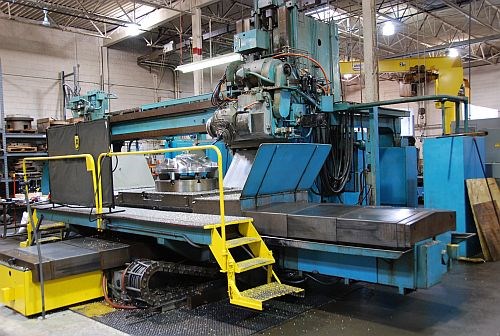Published
Minding Fundamentals
When evaluating a machine tool or other piece of manufacturing equipment, don’t get distracted by bells and whistles.
Share




ECi Software Solutions, Inc.
Featured Content
View More



.png;maxWidth=45)
DMG MORI - Cincinnati
Featured Content
View More
Takumi USA
Featured Content
View More
The new Hurco machines complement vintage Sundstrand five-axis models like this one. These machines have been retrofitted with the company’s own rotary spindle heads, PC-based controls and impeller machining software.
As a Modern Machine Shop editor, I see a lot of new products and technologies, and it is important to guard against getting swept away in the flurry of excitement and promise that often surrounds their release. It can be easy to forget that, like a top athlete in any sport, most manufacturing technology still relies on a core set of well-established fundamentals, regardless of overall capability.
Rigidity. Power. Torque. Those were the machine tool fundamentals Dave Bernhardt was looking for when he needed to add capacity at NuCon Corporation, the shop he co-founded in Livonia, Michigan that specializes in blisks, impellers and other rotating, bladed components. He settled on two VMX42SR five-axis VMCs from Hurco (Read about NuCon’s application of these machines here).
Interestingly, however, the new Hurcos hail from a completely different technological generation than the machines NuCon uses for most of its work: 15 decades-old models from Sundstrand. Of course, the Sundstrands have been refurbished and upgraded over the years, Mr. Bernhardt says. Nonetheless, he emphasizes that these vintage five-axis machines are fundamentally sturdy and powerful enough to productively cut the hardened stainless steel that constitutes most of the shop’s work.
When I interviewed Mr. Bernhardt, this surprised me. I suppose there’s something about watching a cutting tool move smoothly and effortlessly around a sculpted, contoured blade surface that just screams technological modernity and sophistication. However, as demonstrated at NuCon, the most modern and sophisticated technology isn’t always the best fit. Sometimes, it’s all about the fundamentals.
.png;maxWidth=970;quality=90)


























.png;maxWidth=300;quality=90)






